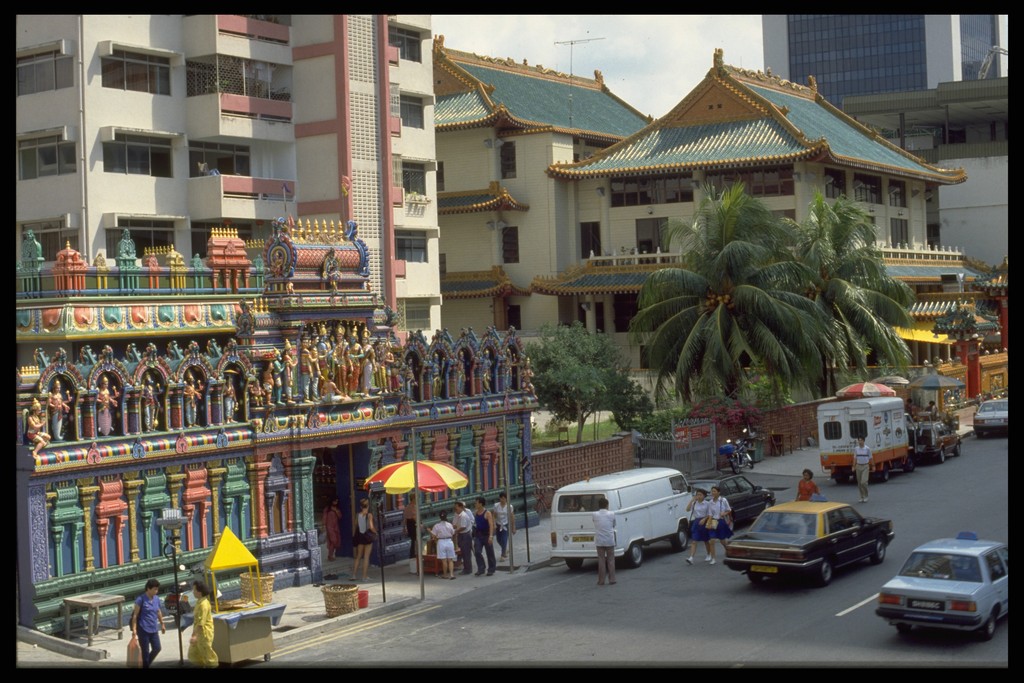清明节
19世纪先民下南洋,客死异乡者,同乡为他们设坟殓葬,也会定期祭拜。其中一个重要日子是清明节,它通常在每年阳历4月初,即“春分”节气后的第15天。在这段期间上坟烧香,祭拜先人,形成新加坡清明节祭祀礼仪的雏形。渐渐的,各籍贯人士纷纷购置自己的义山坟地,例如福建人的恒山亭、潮州人的泰山亭、广东人的碧山亭、海南人的玉山亭、客家人的双龙山等。新加坡的清明祭祀活动,最早是围绕着这些义山坟地而开展的。
寒食节的由来
《礼记》说道:“礼有五经,莫重于祭。夫祭者,非物自外至者也,自中出生于心也;心怵而奉之以礼。是故,唯贤者能尽祭之义。”祭祀是重要的礼节,唐宋时期颁布清明节“出郊省坟”政令,清明演变为华人最重要的传统祭祖节日。
祭祖扫墓的意义是传承尊祖敬宗、慎终追远的文化。清明节祭祀的习俗可溯源自早清明节一天的寒食节。据中国民间传说,在春秋时期(公元前770-476年),晋国公子重耳逃亡在外。有一次他饿晕了,介子推从自己腿上割下一块肉,烤给重耳吃。多年以后,重耳成为国君晋文公,欲对昔日同甘共苦的随从进行赏赐。介子推拒绝受赏,背着老母亲隐居深山。晋文公放火烧山,希望介子推会走出来,结果介子推母子被活活烧死。晋文公将放火烧山的日子定为寒食节,并下令每年这天只吃生冷食物,以示感恩缅怀之情。
祭祖活动
每逢清明节,新加坡的华人坟场和骨灰安置所热闹非凡。清明节成为一个新加坡华人家庭团聚的日子。过去常见的活动是到坟场扫墓,但现在普遍多是火葬,国人就改为到骨灰安置所祭奠祖先。新加坡人还有海葬的选项,以及将亲人骨灰撒在蔡厝港清心园土壤的选择。

近年来,选择海葬的华人有所增加,约占10%至16%。1新加坡的海葬地点位于实马高岛以南2.8公里处。有些死者家属则通过殡葬业者跟有关当局安排,在新加坡本岛与德光岛之间的指定水域,用白布或红布包裹骨灰,或使用可生物分解的骨灰瓮,由亲人投入海中,然后撒下鲜花。
团结互助 慎终追远
新加坡的会馆组织延续华人集体祭祀先民的传统,在清明节举行“春祭”仪式。以福建会馆为例,春祭往往在万礼坟场和蔡厝港坟场举行(福建公坟多迁至这两处)。祭祀仪式由总务科主持,仪式开始时,一行人先安置牲礼祭品,然后点香烛祭拜大伯公,再祭拜先辈。接着,祭祀主持念读祭词,怀念先辈功绩,并祈佑国家平安。祭词念完,一行人行鞠躬礼,然后焚烧金银纸帛。2拥有醒狮团的广东人社团如鹤山会馆、冈州会馆和三水会馆则保存百多年来舞狮拜祭祖先的习俗,每逢清明和重阳节派狮队到广惠肇碧山亭总坟拜祭,开创舞狮祭祖的先河。3


祭祖仪式结束后,大家可以享用受到祖先祝福的祭品。祭品往往是五牲(如鸡鸭、猪头、鱼类、螃蟹和鱿鱼)、水果、饭菜和糕点。一些社团也以烧猪为主要祭品,祭祖后“太公分烧肉”,也就是由老人家将烧猪分给大家,贯彻团结互助的理念,同时将福泽世代相传。
新加坡清明的习俗也因籍贯的不同而有所区别。潮州人过清明节也叫“过春纸”,取在墓身上放置彩色纸、用蚶壳压住纸张的习俗(“过纸”或“挂纸”),寓意将“蚶壳钱”送给祖先。4潮州人也会在冬至扫墓,叫“过冬纸”。福建人也有“挂纸”的习俗,也称“压纸”,意即用石头将长方形的黄白墓纸或五色墓纸压在坟上,表示子孙已祭拜过祖坟。5广东人有甘蔗祭祖的习俗(俗称“清明蔗”),寓意一家人甜甜蜜蜜。嚼甘蔗必须从头咬到尾,以后做事情才会有头有尾,善始善终。福建人在清明之时,流行吃薄饼,也会准备蛤,在坟前吃,把蛤撒在墓前。6
农历九月初九重阳节,跟清明节一样,是个纪念先人和扫墓的节日。民间“秋祭”往往也在这个时候举行。近年来本地民间较少秋祭的追思活动,但一些宗乡社团仍坚持重阳节祭祖的礼仪。清明的“春祭”和重阳的“秋祭”成为新加坡华人追思祖德、实践孝道的重要节日。
| 1 | Audrey Tan, “More opting for fuss-free burial at sea”, The Straits Times, 28 October 2014. |
| 2 | 黄健发,〈追思祖德,承先启后〉,《联合晚报》,1983年4月2日。 |
| 3 | 李国樑编,《鹤山狮,风雨兼程,硕果百年》(新加坡:新加坡鹤山会馆,2019),64-65。 |
| 4 | Tan Gia Lim, An Introduction to the Culture and History of The Teochews in Singapore (Singapore: World Scientific, 2018), 104 – 105. |
| 5 | 新加坡福建会馆编,《阮这世人——新加坡福建人的习俗》(新加坡:福建会馆,2009),90。 |
| 6 | 区如柏,〈冥纸烧红我们的心〉,《联合早报》,1989年4月2日。 |
华人礼俗委员会编,《华人礼俗节日手册》。新加坡:新加坡宗乡会馆联合总会,1989。 |










